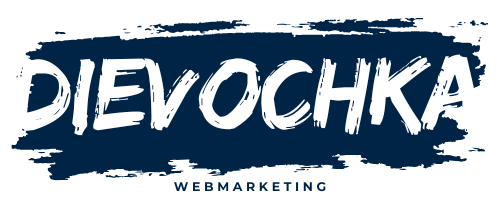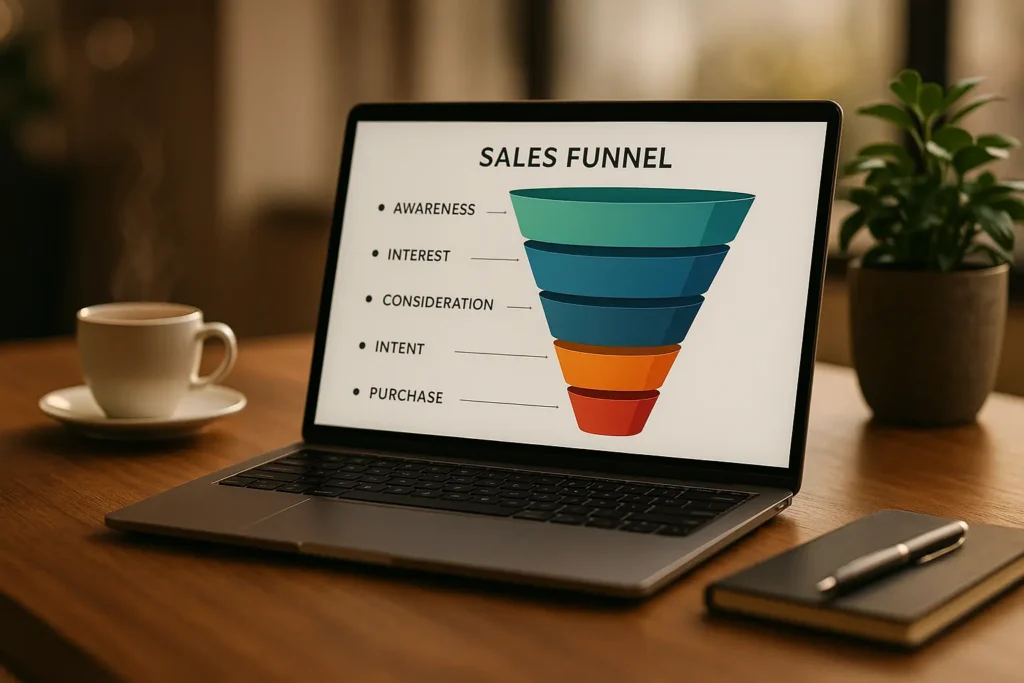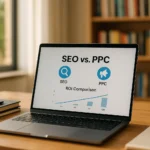In an era where the digital marketplace is bustling with brands vying for attention, we often hear about the magic of the “sales funnel.” With businesses pivoting online, it’s time we demystify this pivotal concept and harness it to transform our leads into loyal customers. Our goal here is to build a sales funnel that doesn’t just attract passerby clicks but genuinely offers value at every stage, guiding potential buyers smoothly from first encounter to purchase.
The best sales funnels are seamlessly integrated into the business strategy, optimizing every interaction with the potential customer. Let’s dive into the process of creating a high-converting sales funnel from scratch, ensuring each funnel is tailored to meet the customer‘s needs at every stage.
Understanding the Stages of the Sales Funnel
A high-converting sales funnel isn’t built overnight. It requires a detailed understanding of each stage that a customer goes through before making a purchase. Let’s walk through these stages:
Awareness Stage
The journey begins here. At this stage, potential customers are just getting to know our product or service. Our aim is to capture their interest without overwhelming them. Using content marketing strategies such as blog posts, social media updates, and eye-catching infographics, we create engaging, informative pieces that make our brand linger in their minds.
Interest Stage
Having piqued their interest, the customer now seeks more information. At this crucial stage, tailoring our content to answer potential questions is key. Webinars, detailed guides, and expert articles can establish us as an industry authority, which will help build trust.
Decision Stage
When potential customers evaluate their options, they need a gentle nudge towards a purchase decision. It’s here we present targeted offers, showcasing why our product stands out. Email marketing comes into play, delivering personalized content and exclusive offers.
Action Stage
At this point, the customer is ready to make a purchase. A seamless checkout process, with multiple payment options and a customer-centric approach, can finalize the deal. Our content should focus on making this stage as frictionless as possible.
Crafting Compelling Content at Each Stage
Great content is the glue that holds a sales funnel together. It’s vital to create content that resonates with our audience at every stage of their journey.
Awareness Content
At the top of the funnel, our focus is on content that introduces and informs. Creating visually appealing, shareable pieces such as blog posts or videos can foster curiosity. These should be rich in storytelling, allowing potential customers to see their needs being addressed.
Interest Content
Once we’ve caught their attention, content must cater to deeper inquiries. eBooks, white papers, and in-depth podcasts can provide in-depth insights, cementing our position as an industry leader. This content should be informative, fact-based, and easy to digest.
Decision Content
At this stage, creating content that compares features, benefits, or testimonials can influence decisions. Case studies highlighting successful customer experiences can work wonders, providing social proof and building trust.
Action Content
Here, content should focus on ease and urgency. Flash sales, limited-time offers, and personalized email offers can create a sense of urgency, prompting potential customers to take decisive action.
Building a Customer-Centric Experience
Our sales funnel is only as effective as the experience it delivers. In today’s competitive market, cultivating a customer-centric approach is paramount.
Personalization
Modern consumers expect personalized interactions. By leveraging data analytics, we can tailor each interaction based on the consumer’s previous behaviors and preferences. Personalized emails, dynamic website content, and targeted offers make the customer feel valued.
Seamlessness
Every stage of the funnel should be seamlessly connected, ensuring that the customer smoothly transitions from one stage to the next. Intuitive navigation, mobile-responsive design, and omnichannel support create a cohesive experience.
Support
Responsive customer support can be the difference between a lost lead and a loyal customer. Providing 24/7 support via live chat or a detailed FAQ section ensures that any potential hurdles are swiftly addressed, keeping the customer journey uninterrupted.
Optimizing the Funnel for Maximum Conversion
Building a sales funnel is just the beginning. Continuous optimization is crucial to maintain and increase conversion rates.
Analyzing Performance
Regularly examining the funnel’s performance can highlight areas of improvement. Using analytics tools, we can track conversion rates at each stage and identify potential bottlenecks. This data-driven approach ensures informed decision-making.
A/B Testing
Conducting A/B tests allows us to compare different versions of content, emails, or landing pages to see which performs better. Continuous testing and tweaking can significantly enhance conversion rates.
Feedback Loop
Encouraging and reviewing feedback from customers can provide insights into possible improvements. By understanding their pains and pleasures, we can adapt our funnel accordingly, ensuring we meet their evolving needs.
Crafting a high-converting sales funnel is akin to an artist painting a masterpiece. It requires vision, precision, and constant evolution. By understanding each stage and creating a cohesive, customer-centric experience, we can guide our leads toward a successful conversion.
In today’s dynamic business environment, the best sales funnels are those that adapt to their audience’s needs and preferences. It’s not about overwhelming customers with options but offering them a tailored, meaningful journey.
As we continue to innovate and iterate, our sales funnel will evolve, ensuring that our business remains not just relevant, but thriving in the ever-competitive market. Let’s embark on this journey together, building a sales funnel that not only converts but also delights.
FAQ
What is a sales funnel and why is it important for businesses?
A sales funnel is a step-by-step process that guides potential customers through the journey of awareness, interest, decision, and action. It’s crucial for businesses as it helps in understanding customer behavior, improving engagement, and ultimately increasing conversions.
How do I identify the target audience for my sales funnel?
To pinpoint your target audience, start by analyzing your product or service’s features and benefits. Conduct market research to uncover demographics, interests, and pain points of potential customers. Use this information to craft a buyer persona that guides your funnel strategy.
What are the key stages of a sales funnel and how do I optimize each?
The key stages include Awareness, Interest, Decision, and Action. Optimize Awareness by using targeted ads and content marketing. For Interest, provide valuable information through newsletters and webinars. During the Decision stage, use testimonials and comparisons. Finally, ensure a smooth purchase process to drive Action.
How can I create compelling content for each stage of the funnel?
Craft content that resonates with the audience’s needs at each stage. At the Awareness stage, use informative blog posts and social media content. For Interest, offer free guides and engaging videos. During Decision, provide case studies and detailed product demos. For Action, focus on clear call-to-actions and limited-time offers.
What tools are essential for building and managing a sales funnel?
Essential tools include a customer relationship management (CRM) system for tracking leads, an email marketing platform for nurturing prospects, and analytics software to measure funnel performance. Additionally, landing page builders and automation tools can streamline the funnel process.



